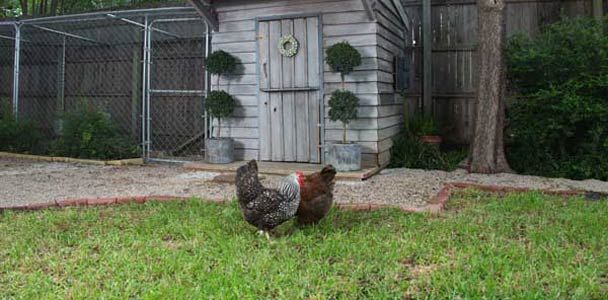Chicken coops provide more than just shelter for your flock. A well-designed coop improves your chickens’ health and happiness and makes upkeep easier for you. This guide includes 10 easy tips to help you enhance your coop’s functionality and comfort. From improving shade and ventilation to enhancing safety, we’ll cover everything you need to know to build a better chicken coop.
1. Enhance Coop Comfort With Natural Shade
A shaded spot can significantly improve your chickens’ cooling during the hot summer months. Place your coop beneath a mature tree, providing natural shade and protection from the elements. In winter, the bare branches allow sunlight to penetrate, offering warmth to your feathered friends.
When selecting a site for your coop, also consider the aesthetics. Rustic brown siding can blend seamlessly with the natural surroundings, while decorative elements like hanging baskets enhance the coop’s look. Adding window shades or awnings can also provide additional shade.
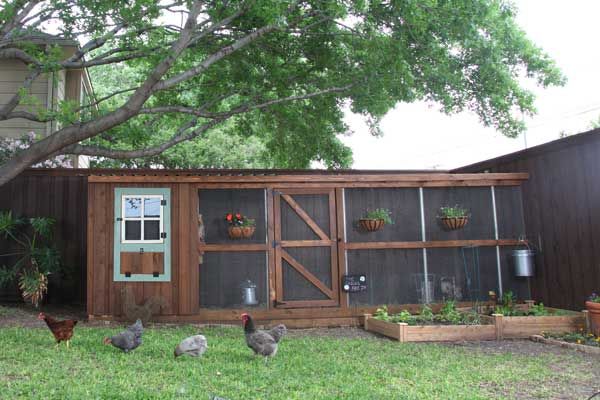
2. Elevate Your Coop for Better Hygiene
Raising the nesting area’s floor 2 to 3 feet off the ground helps to keep your flock’s feet dry during wet weather, reducing the risk of dampness-related health issues. This design also makes it easier to clean beneath the coop, improving overall hygiene.
Adding a ramp allows chickens easy access between the elevated coop and the run. Install stacked double barn doors to both spaces for easier cleaning and maintenance. When designing your coop, plan for adequate height to accommodate standard-sized doors. You can buy an off-the-shelf screen door from your local home improvement center. A hinged floor design can offer improved access to the coop’s interior for thorough cleaning and maintenance tasks.
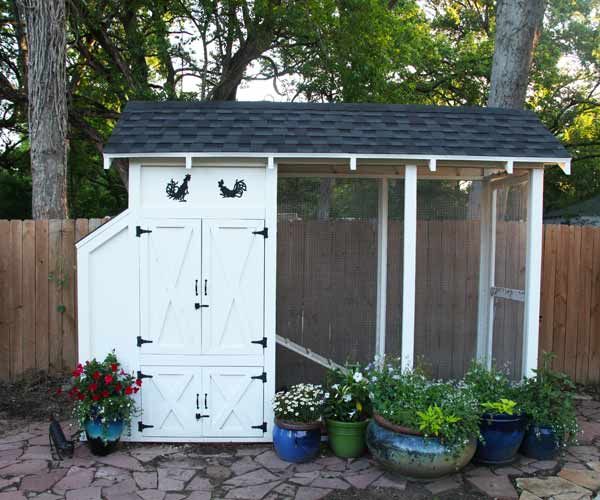
3. Optimize Coop Lighting for Year-Round Productivity
Good lighting in the coop is essential for maintaining egg production, especially during shorter winter days. Chickens need about 14–16 hours of light daily to keep laying consistently. When natural daylight is insufficient, supplemental lighting helps maintain productivity year-round.
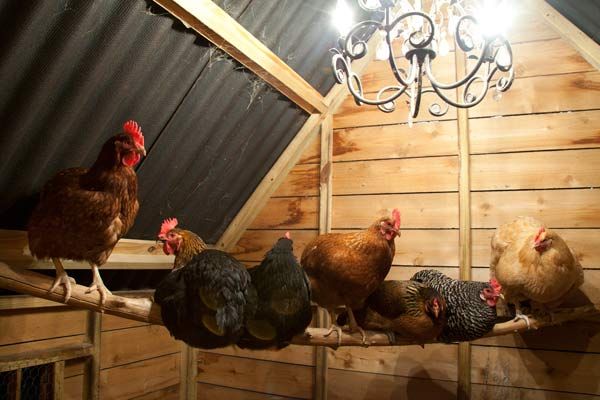
Select warm-toned bulbs that mimic natural sunlight, as cool, bluish-white light does not stimulate laying behavior. Consider installing a small chandelier or pendant light to provide necessary illumination and add a touch of charm. Use a timer to provide consistent lighting schedules and avoid disturbing your chickens’ natural sleep patterns. Solar-powered lights are also a good option for energy efficiency and easy installation.
4. Create Cozy and Functional Nesting Boxes for Your Coop
Nesting boxes should be cozy, dark, and slightly elevated from the coop floor. While purpose-built nesting boxes are available, you can use creative alternatives like sturdy wicker baskets lined with soft bedding materials like straw or wood shavings.
Make sure to provide roosting perches for your chickens to sleep on at night, in addition to nesting boxes. An effective roost can be a simple wooden dowel or closet rod. Place the roosts higher than the nesting boxes to discourage chickens from sleeping there. Add varied roost levels to suit the preferences of different chickens within your flock.
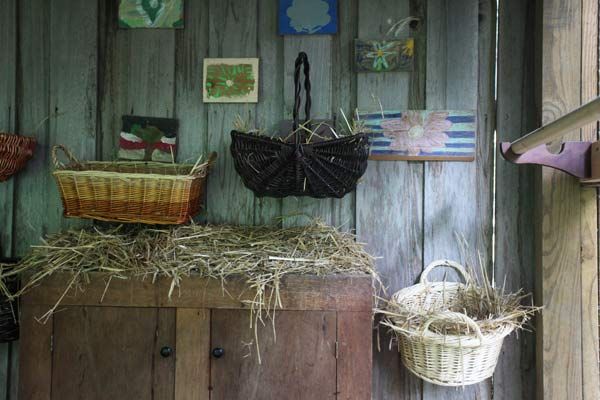
5. Secure Your Coop With Predator-Resistant Features
Protecting your flock from predators is a top priority when designing your chicken coop. Nocturnal animals such as raccoons, opossums, and foxes pose a significant threat to chickens. Choose metal latches such as barrel-bolt latches or carabiners that prying paws can’t easily open.
Always lock up your flock at night, when they’re most vulnerable to predator attacks. Install automatic coop doors to protect your chickens even when you’re not home. Also, reinforce any potential entry points with hardware cloth and a strong wire mesh that’s more secure than chicken wire. Heavy-duty hinges and extra locks can secure your coop from determined predators.
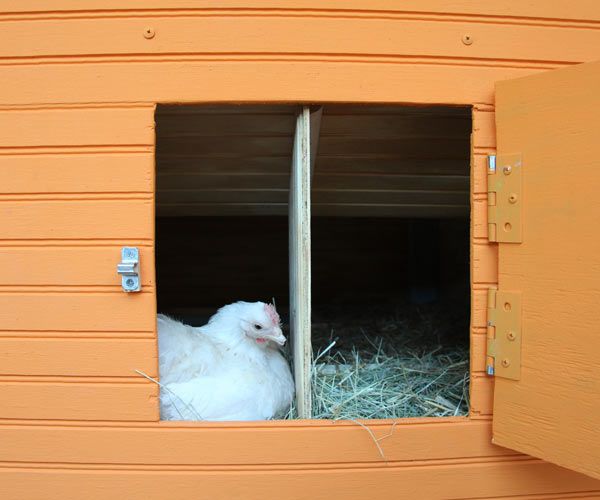
6. Build a Safe Outdoor Space for Your Chickens
Chickens need outdoor access for exercise, foraging, and dust bathing. A well-designed run provides a safe space for your flock to enjoy the fresh air without risking predator attacks or damage to your garden. Enclose the run with sturdy hardware cloth, burying it at least 12 inches deep to prevent digging predators.
For added protection and convenience, create a screened-in tunnel that connects the coop to a separate, fenced section of your yard. This design allows your chickens to enjoy a larger free-range area while still maintaining control over where they roam. Use durable materials like cedar for the run structure to extend its longevity and resistance to the elements. Adding overhead netting or mesh will protect your chickens from aerial predators while allowing them the freedom to roam safely.

7. Improve Coop Ventilation for Better Air Quality
Without adequate airflow, ammonia buildup from droppings can lead to respiratory issues in your flock. Install vents near the roof of your coop to allow hot air and moisture to escape while preventing drafts at the chickens’ level.
A popular design feature is to create a gap between the walls and the slanted roof, covered with hardware cloth or screening. This allows for continuous air circulation without compromising security. In colder climates, consider using adjustable vents that can be partially closed during winter to maintain warmth while providing necessary ventilation. Vent flaps or louvers that can be opened and closed as needed help to regulate airflow throughout the year.
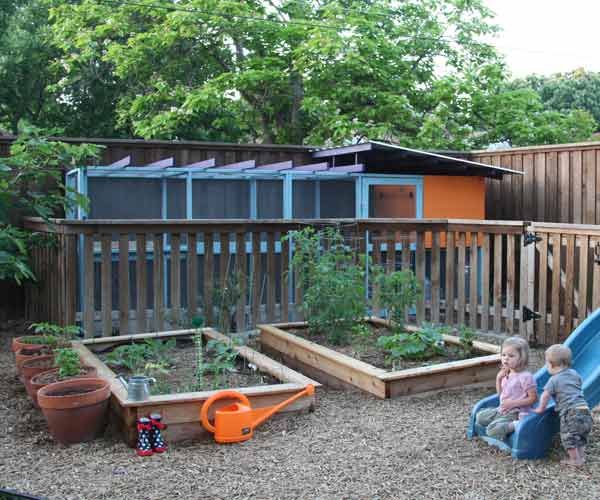
8. Add Convenient Chicken Coop Features for Easier Care
Designing your coop with convenience in mind will make daily chicken care tasks more manageable. A walk-in design allows easy cleaning and maintenance of the coop’s interior. Include built-in storage for feed, bedding, and tools to keep everything organized and easily accessible.
Adding features like a rain collection system to provide a sustainable water source for your flock. Install feeders and waterers that are easy to refill and clean, preferably from outside the coop, to minimize disturbance to your chickens. A well-sealed metal trash can inside or near the coop provides convenient feed storage, protecting it from pests and moisture. Including hinged or sliding front panels will make it easier to access and clean out the coop regularly.
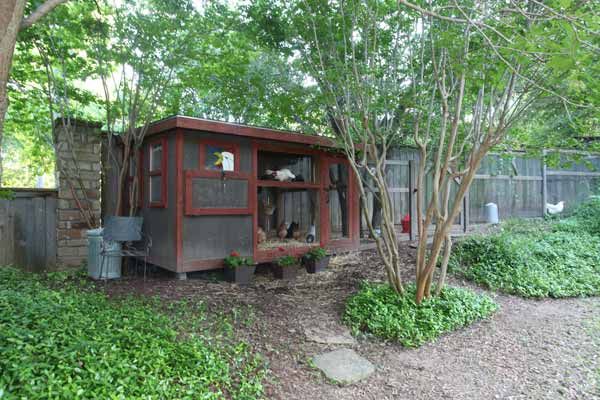
9. Transform Existing Structures into Chicken Coops
Repurposing existing structures can be a cost-effective and environmentally friendly option. Old playhouses, garden sheds, or even unused dog houses can become charming and functional chicken coops with some modifications.
When repurposing structures, prioritize the health and safety of your chickens. Avoid using materials treated with harmful chemicals or coated with lead-based paint. Clean and disinfect any salvaged materials thoroughly before adding them to your coop design. Installing a predator-resistant enclosure around the structure will keep your chickens protected.
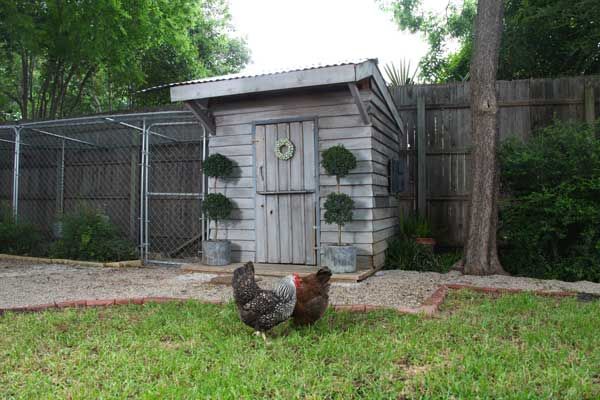
10. Add Personal Touches to Your Chicken Coop
Adding personal touches and architectural details to your chicken coop can transform it from a simple structure into a charming backyard feature. For example, add flower boxes beneath divided-light windows to enhance visual appeal and grow chicken-friendly herbs or flowers.
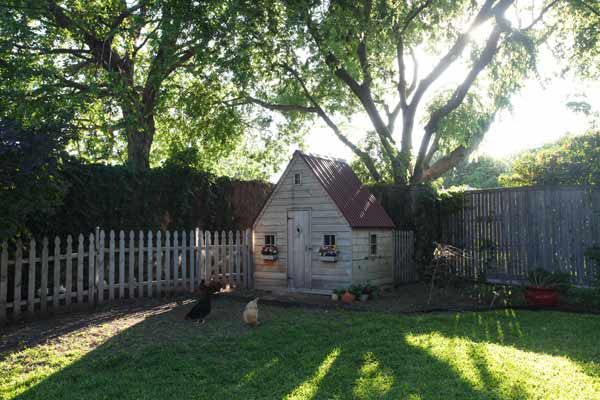
Other decorative elements may include scalloped trim, a colorful tin roof, or a small cupola. These details improve the coop’s appearance and can serve functional purposes, such as enhancing ventilation or providing additional nesting space.
Always prioritize creating a comfortable and practical environment for your chickens. Additional touches like a weather vane or pastel-colored paint can further enhance the coop’s charm and make it a conversation piece in your backyard.
